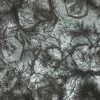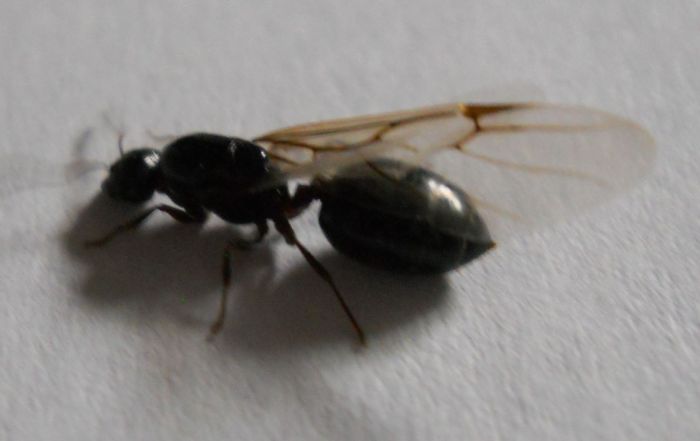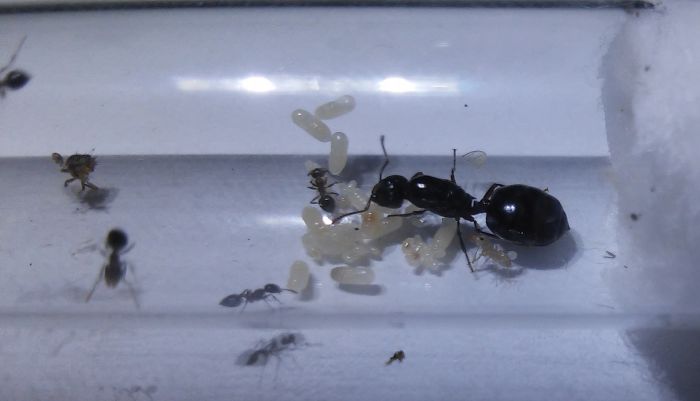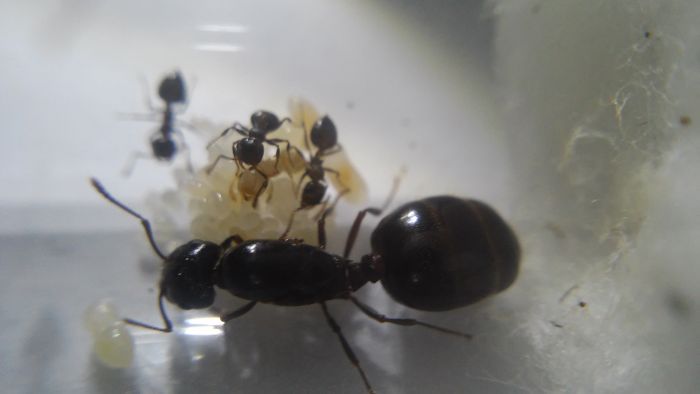I've been wanting to find a queen of this species for so long! Usually I see them WAY out in the desert, usually in the Salton Sea/Palm Springs area. Down in San Diego I mostly saw Messor andrei, and I never had luck getting a queen of them either. Except, I kind of like Veromessor pergandei a bit more as there is a greater size variance.
With that said, I REALLY hope my queen is mated as she was just floating around in a pool. I mostly get non-fertile queens in the pool area, but I did get a Solenopsis invicta queen that was mated and got workers and she was in the pool. I didn't keep her though as I'm not very interested in S.invicta.
Also, I found this queen in an apartment complex. Last year, I saw some queens of this species when I would walk in the morning, but the sun had already killed them. They are coming from across the river and behind the hill, and I have NO idea what the environment is like or anything in that area. It is completely fenced off and people have been fined for going past the fence. I do know all along the river are billions of Argentine ants and new S. invicta colonies. On the far side of the hill on the opposite end is just millions of Argentine ants. No idea what is in-between though. I do know there is a lot of ants that fly from that area, especially Solenopsis invicta and I am guessing there are amazing ant colonies there. I just will never be able to go over there, sadly.
I'll update in about a week or two, or if I see she has laid eggs sooner. Again, I really really hope she is fertile. I imagine she is as most queens that come from behind the hill have been fertile for me even when I find them in the pool. But, not all of them. Its quite a huge distance to fly to the pool from that area without having been mated with.
Wish me luck everyone! ![]() This is definitely on top of my favorite native species around here to keep. Huge colonies, nice size variety amongst the workers, very active (at night anyway) and are very interesting to watch.
This is definitely on top of my favorite native species around here to keep. Huge colonies, nice size variety amongst the workers, very active (at night anyway) and are very interesting to watch.
Also, I gave her some honey. I do that with all my new queens. I have better success when queens have a supply of honey to eat. And, I might put a Drywood termite alate in for her tomorrow as well, as termites are great for new queens.
Edited by Vendayn, September 8 2015 - 11:49 PM.


























